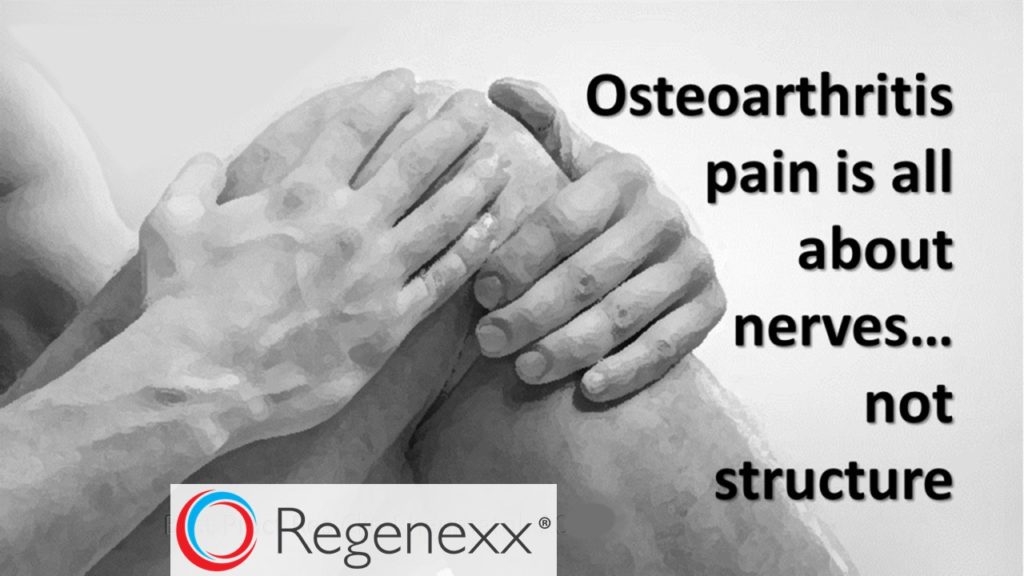Osteoarthritis Pain Not Related to Structure – Again…
Have you ever seen the movie Groundhog Day? That’s what it felt like when I came across a study this proving – again – that OA pain is not related to structure. At issue here is the orthopedic paradigm that pain IS related to structure; that MRI findings like meniscus tears and cartilage damage associated with arthritis are the cause of the pain a patient is experiencing. This study caught my eye because it sought to identify the actual source of osteoarthritis pain, which is something we know well from years of doing the types of exams which actually find the source of pain, and treating osteoarthritis pain successfully without surgery.
I suppose it’s easy to see where this erroneous paradigm comes from. Joints are complex mechanisms full of structural parts which connect one part of a body to another in a way that allows movement. There are ball and socket joints like the hip, hinge joints like the elbow, gliding joints like in the hand and saddle joints like the vertebrae in the spine. What they all have in common are bones, cartilage, fibrocartilage, synovial fluid, tendons, ligaments and muscles….and the nerves which send and receive signals to and from the spinal cord and ultimately the brain which direct what all of the aforementioned parts need to do, and are also the part of the joint which send pain signals. Osteoarthritis is a condition that occurs when the protective cartilage at the ends of the bones in a joint wear down, whose major symptom is pain. Since it is the cartilage which is damaged, it has been generally assumed that the damaged cartilage is the source of the pain.
What the study out of Paris determined was that Osteoarthritis pain originates in the free axonal nerve endings in the synovium, the tendons, and the periosteum (dense irregular connective tissue covering the bone rich in blood vessels and nerve endings), not the cartilage. They found that OA, or Osteoarthritis pain is a complex issue involving several different types of neuromediators and nerve signals, and is not correlated with joint degradation. Let me restate that – this is one of a bevy of studies where the degree of arthritis on imaging is not related to the amount of pain that patients report. Hence severe arthritis on x-ray doesn’t mean severe pain. The study concluded that because of it’s complex nature, treatment approaches to treat OA pain should be carefully chosen (i.e. not determined by solely looking at an x-ray or MRI image and a quick exam).
The upshot? Despite many recent studies showing that MRI findings of arthritis aren’t correlated to pain, many orthopedic surgeons haven’t gotten the memo. The problem with the orthopedic paradigm that pain is tied to structure is threefold: first, countless unnecessary and damaging surgeries are being done based on MRI findings which have nothing to do with the source of the pain, and second and more importantly, the patient is then left with the future negative consequences of those surgeries. Finally, the patient’s pain wasn’t addressed because the structural problem that was “fixed” had nothing to do with the source of the pain.

If you have questions or comments about this blog post, please email us at [email protected]
NOTE: This blog post provides general information to help the reader better understand regenerative medicine, musculoskeletal health, and related subjects. All content provided in this blog, website, or any linked materials, including text, graphics, images, patient profiles, outcomes, and information, are not intended and should not be considered or used as a substitute for medical advice, diagnosis, or treatment. Please always consult with a professional and certified healthcare provider to discuss if a treatment is right for you.

